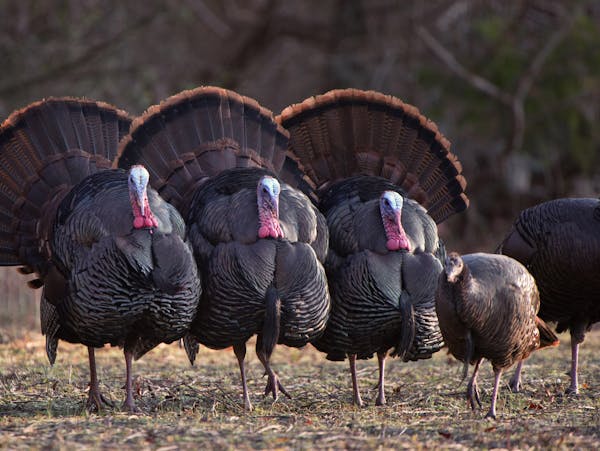Conservation officials are poised to introduce a second herd of bison to Minnesota parkland, officials said Monday.
The move will bring the once-nearly extinct mammal closer to more Minnesotans, in a natural setting where visitors can get a good look, while helping sustain bison as a wild species.
About 350 acres at Minneopa State Park, just west of Mankato, will be fenced off and populated with about 40 bison — some from a herd at Blue Mounds State Park, near Luverne, and a handful from the Minnesota Zoo, according to the state Department of Natural Resources (DNR).
Bringing North America's largest land mammal to Minneopa "will restore a missing piece of the state park's native plant and animal communities and create a significant new attraction for park visitors," according to a DNR proposal, which will be presented for public review on April 22 at the Blue Earth County Public Library in Mankato.
After the bison settle in at Minneopa, as soon as this fall, additional locations will be identified, with state herds eventually topping out about 500 head, said Jade Templin, a principal planner for the DNR's Parks and Trails division. The Blue Mounds herd, established in 1961, fluctuates between 80 and 100 head.
There are no managed herds on federal land in Minnesota, and other bison in the state are raised as livestock in private herds.
The DNR proposed Minneopa for several reasons: the substantial number of visitors from Mankato and the Twin Cities; sufficient remnant and restored prairie; excellent vistas and roads and facilities to enhance viewing by visitors; and potential educational and research partnerships with nearby Minnesota State University Mankato and Gustavus Adolphus College.
The prairie set aside for the bison will be bisected by a road, allowing visitors to drive among a herd whose full-grown males will weigh about a ton and stand nearly 6 feet tall at the shoulder.
"Our expectation is you should have a pretty good chance of seeing the bison up close," said Ed Quinn, a DNR natural resources manager, who cautioned, "We aren't going to let you get out of your car."
"How cool to look into Minnesota's past of native prairie remnant," Quinn added.
The bison, commonly but not altogether accurately referred to as buffalo, once thrived on Minnesota's prairies. However, by 1900 settlement and slaughter by market hunters and the U.S. Army combined to reduce its numbers to a captive handful.
"It's eagles, bison — it's these things [in nature] that people can get all excited about," Quinn said.
The bison will be chosen to create the right mix of gender and age to "create something that is a natural herd," Templin said. "The idea is that the bison will maintain themselves out on the landscape. We will not feed them like cattle."
State conservation officials also see enclosed park settings as the best way to keep bison as genetically pure as possible by limiting the introduction of cattle genes, he said.
Paul Walsh • 612-673-4482

Official who helped MSHSL on pioneering ventures dies at 89

Buy Nothing meets GoFundMe: How a Eden Prairie website aims to 'revolutionize' philanthropy

